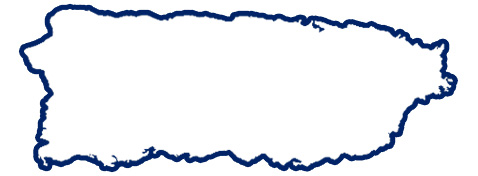- Personal
- AccountsHow can we help you?ToolsMy Online Bank 24/7
- Access your accounts
- Deposit and withdraw
- Pay your bills
- Transfer funds from your accounts
- Credit Cards & LoansHow can we help you?ToolsApply for a personal loan to consolidate your debt
- From $2,000 up to $75,000
- 12 to 84 months’ terms
Benefits for credit card customersLearn more - Insurance & InvestmentsNeed insurance?Plan for the futureQuote an Insurance
Contact one of our representatives.
Insurance ClaimsBegin your claim here, call 787.706.4111 (dial 1 for Customer Service) or visit our offices on workdays, Monday through Friday from 8:00 a.m. to 5:00 p.m.
- ServicesTargeted SegmentsMore ServicesMy Online Bank 24/7
- Access your accounts
- Deposit and withdraw
- Pay your bills
- Transfer funds from your accounts
Turns and Appointments in branchesLearn more
- Accounts
- Business
- Popular One
- About us

How can we help you?
FIRST DECADE
1893 a 1903
Puerto Rico
- The decade 1893 to 1903 was transcendental. For 400 years, Puerto Rico had belonged to Spain; our language, our daily life, traditions, religion… everything was done in the Spanish custom.
- Sugarcane was the principal source of sustenance of the economy, although tobacco, coffee, and various other crops were cultivated.
- Poverty was extreme for most residents, and usury was common on the part of unscrupulous lenders who would tie the borrower to debt without end.
- In 1898, because of the Spanish-American War, Spain ceded Puerto Rico to the United States, and shortly after there was a currency devaluation that put Puerto Rico and its institutions on the brink of bankruptcy.
- To make the situation worse, in 1899 hurricane San Ciriaco caused devastation across the island.

Banco Popular
- There were several Spanish banks operating in Puerto Rico. The biggest was Banco Español.
- On October 5, 1893, the Caja de Ahorros y Préstamos Banco Popular was founded during a meeting at the Ateneo Puertorriqueño, with an initial investment of 5,000 provincial pesos.
- The new institution sought to help the poor to save and not fall victim to usurers.
- The name would later change to Banco Popular de Economías y Préstamos, which in its first year operated in a small space in Tinaud’s jewelry store on a corner of today’s Plaza de Armas.
- A year later, it occupied an office at the City Hall. It would remain there for 20 years.
- In 1895, the Banco Crédito y Ahorro Ponceño opened its doors in Ponce.
- With the change of sovereignty in 1898, Spanish currency lost 40% of its value, and Banco Popular saw its capital of 30,000 provincial pesos reduced to 18,000 dollars.
- Banks on the island faced serious difficulties, and some were forced to close. Popular managed to stay afloat.
- Banks from the United States began to operate on the island.

Music
- On the island, people sang and danced to music by local composers and adaptations of folklore.
- Another popular genre was traditional jíbaro music, bomba and plena, while in the city people listened and danced to waltzes, mazurkas, danzas, and contradanzas.
- Manuel Gregorio Tavárez and Juan Morel Campos were acclaimed danza composers.
- The aguinaldos, lullabies, rosary prayer songs… all were part of our Spanish traditions. Others, like the baquiné, came from African influences.
- Whenever possible, upper-class islanders would send their children to study in Spain.
- The tenor Antonio Paoli was the first Puerto Rican artist to reach international fame in classical music when he sang in the Paris Opera in 1897.

Christmas Tree
- The custom of making Christmas trees was originated in Germany and it was introduced to the United States in 1804, but the first printed image of a Christmas tree in the United States dates to 1836.
- In Puerto Rico (1866), Dr. Agustín Stahl, an Aguadilla native with a German father and Dutch mother, installed the first Christmas tree after returning from his medical studies in Germany and moving to Bayamón. He decorated his tree outside his house for the Holidays; the townsfolks called it “Doctor Stahl’s tree”.
- In 1895, a tree was placed in the White House, illuminated by electricity.
Until the 1890s, in the Victorian Era, many Christmas trees had wax ornaments in the shape of angels and children. They also had ornaments made of cotton and wool, with paper in relief that formed human faces, along with glass and crystal ornaments blown in Germany. By the end of the decade, people began to use glamor and place a star at the top of the tree. The first Christmas lights were invented in 1882, in Thomas Edison’s assistant’s home. They were mass produced for the first time in 1890, and in 1985 they were available in color.
 Puerto Rico
Puerto Rico 


